Ad With Fashion Model and Logo
The terms "brand" and logo" are often used interchangeably. But, although a logo can be the symbol of a business concern, it is not the entirety of a brand. In fact, creating a logo is merely one pocket-size pace toward developing a strong brand identity. With millions, if not billions, of businesses trying to make a name for themselves, having a strong brand has become crucial for businesses to differentiate themselves from their competitors. If you're working to develop your first brand identity for a client, or y'all're doing this for your own business, information technology'south important to starting time understand what a brand is and what it takes to create 1. Here, let's explore strong examples of brand identities, plus how to create one for your own business organisation, according to brand strategists. A brand identity is made up of what your make says, what your values are, how you communicate your product, and what you desire people to feel when they collaborate with your company. Substantially, your brand identity is the personality of your business organisation and a promise to your customers. Originally, the term "brand" was used to refer to the marker that cattle ranchers "branded" on their cattle. All the same, the idea of a "brand" has since evolved to encompass much more than just a name or a symbol. A brand is a feature — or prepare of features — that distinguish 1 organization from another. A brand is typically comprised of a name, tagline, logo or symbol, design, make voice, and more than. Make identity, then, is the aspect of branding that focuses on your make'due south personality, too equally the values you convey to customers. As Wayfair Senior Brand Manager Jared Rosen puts it, "Brand identity is more than just finding the right logo to place on coffee cup sleeves or mount above your front door. Information technology'south about crafting a personality that amplifies the core elements to your brand's Dna. Today, the nearly magnetic brand identities calibration beyond digital platforms, IRL experiences, and fifty-fifty naturally converse with existent customers." To further understand this concept, let'due south explore some examples, adjacent. Image Source When you hear the name Coca-Cola, you lot probably pic its well-known logo, shown above. But you lot too might think of the polar bear, the color red, its "Share a Coke" entrada, or the classic ribbon-like imagery featured on its cans. Hither are two things that contain Coca-Cola'southward make identity: Image Source Hustle & Hope is a brand that positions their products as more than a greeting card. Their stationary and cards tackle more difficult topics such equally job hunting and personal development. Past pairing simple inspirational messaging with a code on the dorsum of the card that leads to digital content and tips, the cards are meant to "level upwardly" the recipient in some mode. Founder Ashley Sutton always wanted to start a stationery company, just after a career working in some of the top Fortune 500 companies, she became passionate about empowering people to be their best professional person selves. That's when she had an epiphany that would later on get the ground of what makes her company unique: "Why not sell cool greeting cards AND help people!" Here's how this brand's identity is executed: Image Source Popular Fit has a beautiful make with vivid pinks, purples, and yellows, merely that'due south not fifty-fifty a main element of their brand identity. Maybe i of the nearly stunning thing nearly this make is their radical representation found in all their messaging. According to their website, "POP Fit Clothing was built on the idea that representation, inclusivity, and body positivity matters in both fashion and media." This is why their sizes range from XXS to 4XL and feature signature cloth with a four-way stretch. Prototype Source Later on humble beginnings in beekeeping and selling dearest, Burt'southward Bees grew to run across the need for all-natural and sustainable personal products. The visitor seeks to "make thoughtful choices to reduce our affect on nature and piece of work to protect biodiversity, which preserves our own place in the world." Their initial logo (pictured above) depicting the bearded founder underscores the feeling of simplicity and modesty. This is in stark contrast to aesthetics that other beauty and personal care products embody. Hither's how else the brand distances itself from flashiness, sticking to its nature-obsessed focus: Prototype Source Asana's mission is "to help humanity thrive by enabling the world's teams to piece of work together effortlessly." The founders began at Facebook, where information technology was clear that they needed a projection management and collaboration tool that would enable the teams to work together more than fluidly. In Sanskrit, "Asana" refers to a specific pose in which yogis sit, and the company proper name is in homage to the Buddhist principles of focus and flow. This, along with their values of "doing neat things, fast" and teamwork, is manifested clearly in their visual brand, too: Paradigm Source Semicolon Books was born when owner/operator Danielle Mullen chose to seize the day. After being diagnosed with a tumor on her ocular nerve, she was thinking about legacy. Then, without expectation or intention to open a store, she walked by the perfect infinite for charter. Not long later, the spot was hers, and she was building shelves. The volume store's mission is in "nurturing the connection between literature, art, and the pursuit of cognition; while besides using the power of words to better our customs." Because of this, the brand is committed to the Chicago community and cultivating a welcoming infinite for their customers: You'll as well observe that their visual make demonstrates a Chicago vibe, while showing people reading and enjoying the store. In the in a higher place examples, brand is so much bigger than the logo or visuals for the concern. Nosotros'll talk more about this in the sections beneath. As the embodiment of almost everything your business is and does, a brand identity can inspire customers and increment a sense of loyalty for your brand. Brand identity, therefore, is crucial to your business's future. So, if your brand is more than simply its logo, how can you replicate what brands similar Coca-Cola have done and instill other unique elements into your concern's identity? Hither are vi components of a well-adult brand identity, and why it's so important for you to develop them. For all intents and purposes, your brand'south logo is the "face" of your business. Only that face should practice more than just wait cool or interesting — a logo'south contribution to brand identity is associative, too. It tells the public that [this epitome] means [the name of your company]. Having a brand identity doesn't but make your product more memorable; it makes your brand more authoritative in the marketplace. A brand that establishes a face, and maintains that face consistently over fourth dimension, develops brownie amidst its competitors and trust among its customers. A brand identity is a template for everything y'all would include on an advertisement for your concern — whether that advertizing is in print, online, or a preroll commercial on YouTube. A brand with a confront and industry credibility is well prepared to promote itself and make impressions on potential buyers. When you create an identity for your brand, you lot're giving it something to represent. That, in turn, gives your company a purpose. We all know companies have mission statements, right? Well, y'all can't have i without first giving your brand an identity. A brand identity — one with a face, trust, and a mission — attracts people who agree with what your brand has to offer. Merely once these people go customers, that same brand identity gives them a sense of belonging. A good production generates customers, simply a good make generates advocates. If y'all want your business organization to become a well-known and honey make name, it's going to take some work. The following steps will assistance you build a brand identity. They are uncomplicated steps — implementing them, however, is some other story. But like any other attribute of starting a business, the beginning step in creating a brand identity is to complete market research. Y'all should clarify and understand these v things. Every bit HubSpot Brand Strategist James Zabik told me, "One of the almost important things to consider when building a brand identity is how your messaging will resonate with your target audience. Kickoff by finding out your audition's pain points and communicating how your company or product helps solve them." It'south no secret that dissimilar people want different things. You tin't (usually) target a production to a pre-teen the same way y'all would target a production to a college student. Learning what your audition wants from a business in your manufacture is vital to creating a brand people volition love. What makes your business organization unique in your industry? What can you offer your consumers that others can't? Knowing the difference between you and your competition is imperative to developing a successful brand. Keeping an eye on your competitors will also brainwash yous on what branding techniques piece of work well — as well as those that don't. Y'all know what your business offers, only be sure to have a clear and direct mission statement that describes your vision and goals. In other words, know your business'due south purpose — you can't very well create a personality for a business unless you know what that business is most. HubSpot Senior Make Managing director Callie Wilkinson says, "Don't be afraid to correspond something. At present more than ever, customers are drawn to brands that marshal with their values. Inject your mission and vision into everything yous do, and pursue meaningful partnerships with people and organizations that share those values." Even though yous're not necessarily branding an individual, that doesn't mean that you lot tin't be personable when developing a brand image. Utilize your type, colors, and imagery to stand for who the make is. Then enhance that visual representation with your tone of voice: Are you a confident business concern with a lot of sass, like Nike? Or are y'all ritzy and professional, like Givenchy? Either way, be sure to develop your brand as a fashion to correspond your business. Research may be deadening, but the more y'all know nigh your business, the stronger your make identity will exist. Finally, completing a SWOT Assay can be beneficial to better understand your brand. Because the characteristics of the brand will aid yous discover characteristics you want to portray in the brand. SWOT stands for: Once you know your business organization inside and out, it's time to bring your brand to life. In the words of graphic designer Paul Rand, "Blueprint is the silent ambassador of your brand." Hither's what y'all'll need to know: Although the logo is non the entirety of the brand identity, information technology's a vital element in the branding procedure — it'south the most recognizable part of your brand. It'southward on everything from your website to your business concern cards to your online ads. With your logo on all of these elements, your branding should await as cohesive every bit this example: Image via Creative Eatables Every bit imperative equally your logo is to branding, it's not the simply element that makes a brand identity stiff. Your product(due south), the packaging, or the way you present your services all need to play a function in your brand identity. Visually representing your concern in everything y'all do will create consistency and assistance create a familiarity with your consumers. Take McDonald'southward golden arches as an example. They used an interesting form to create the iconic "One thousand," which is now recognizable all over the world. Creating a colour palette is a way to raise your identity. It provides you with variety and then you can create unique designs for your business while remaining true-blue to the brand identity. Type tin also be a double-edged sword if non used properly. Although "mix and lucifer" type design has become quite the trend, that doesn't mean mixing a handful of fonts is necessarily a good thought for your business. In your logo, on your website, and on any documents that your business creates (impress and digital), there should be consistent use of typography. If yous take a expect at Nike's website and its ads, it keeps the same typeface and blazon way throughout all aspects of the business organisation — and it works wonders for them. You probably ship out emails, type up letters, or paw out business organization cards to potential customers on a daily ground. Creating templates (fifty-fifty for a detail every bit minute as email signatures) volition give your business a more unified, apparent, and professional wait and feel. As mentioned in nearly every step already (I can't stress information technology plenty), consistency is what can make or pause a brand identity. Use the aforementioned templates and follow the design choices you've decided upon for your brand throughout all areas of your business to create a harmonious brand identity. Yep, consistency is crucial — simply remaining flexible in a club that is always looking for the side by side all-time thing is just as of import. Flexibility allows for adjustments in advertising campaigns, tag-lines, and fifty-fifty some modernizing to your overall brand identity and so you can continuously go along your audience interested. The cardinal is keeping whatever changes you make consistent throughout your entire brand (due east.g., don't change the pattern of your business organization cards and nothing else). 1 of the most effective ways to ensure a business sticks to its branding "rules" is to create a set of brand guidelines that certificate all of the do's and don'ts of your brand. Skype is 1 brand that has done an astonishing job creating a clear, cohesive make guide that anyone can follow. This is one way to empower people to build brand avails and share your make while remaining brand compliant. Now that you've established your brand inside your company and have taken all the necessary steps to develop it, you're ready to integrate your brand inside your community. And one of the most successful ways to attain this is for your brand to provide quality content. In HubSpot'southward ebook Branding in the Inbound Age, Patrick Shea writes, "In every way, your content is your brand online. It'south your salesperson, your store, your marketing department; it's your story, and every piece of content yous publish reflects on, and defines, your brand. So, neat content, smashing make. Boring content, ho-hum make." Use language that matches that personality of your brand. If your brand identity is high-end, use professional language; if your make is laid-back, be more conversational. The language you choose to utilize as a brand will be integrated throughout the unabridged concern, so it'southward of import that you lot carefully craft your tone to match your brand'southward personality. People love stories. More accurately, people love stories that move them (emotionally and to action). A strong brand identity can institute an emotional connection with consumers, which tin exist a solid foundation for building a lasting relationship with a make. Designing ads, whether traditional or digital, is the about efficient mode of introducing your make to the world. It's a style to get the message of your make seen and heard past your target audience. Another nifty mode to establish a connectedness with your consumers is through social media. The plethora of platforms on the internet offers upward a ton of digital existent manor you can apply to constitute your brand identity. Coca-Cola, once again, makes bang-up use of its Facebook embrace photo real manor past keeping information technology consistent with the happiness theme. Social media is also important when information technology comes to conversing directly with your customers and creating affinity for your brand. If yous're mentioned in a tweet, status, or post (particularly if the customer has a question or concern), be certain to requite your brand a skillful reputation by responding efficiently to your customers. You can follow all the steps of creating a strong brand identity, but if you're guilty of any of the post-obit practices, your brand might falter or neglect. Know what you want to say, and utilize the advisable language and visuals to say information technology. Simply because it makes sense to yous doesn't mean information technology will brand sense to your customers. Your competition may have exemplary branding, and since you lot're selling the aforementioned products or services, y'all might want to do what you know works — don't. Have what they do into account, and put your own twist on information technology to make your concern stand out in your industry even more. Yep, your print textile might await a little different than your online presence, only your colors, type, theme, and message should all be consistent. Rosen told me, "As your brand scales onto new channels, resist the urge to only hunt trends that don't align with your make'due south Dna. Scaling identity only works when you lot iterate off your original song sheet … rather than writing a new song entirely." Similar to other aspects of your marketing, information technology's difficult to know what you're doing right (and what y'all're non) without tracking fundamental performance metrics. Utilize Google Analytics, surveys, comments, social media discussions, etc., to monitor your brand and become a sense of how people talk almost and collaborate with you. This volition requite you the opportunity to implement changes to your brand as needed — whether it'south to correct a error or to amend brand identity. Equally Zabik puts information technology, "Test, larn, and optimize. Figure out what sets your make apart from your competitors and learn to communicate that in a way that builds trust. If your product lives up to the hype y'all create, you'll start to build momentum with customers that believe in your make." Creating a memorable brand requires consistent apply of type, color, images, and linguistic communication, but it's worth it. When consumers instantly recognize who yous are and what you lot stand for all based on a logo, you've become more than just a name and a symbol. Editor's note: This post was originally published in January 2019 and has been updated for comprehensiveness. 
What is make identity?
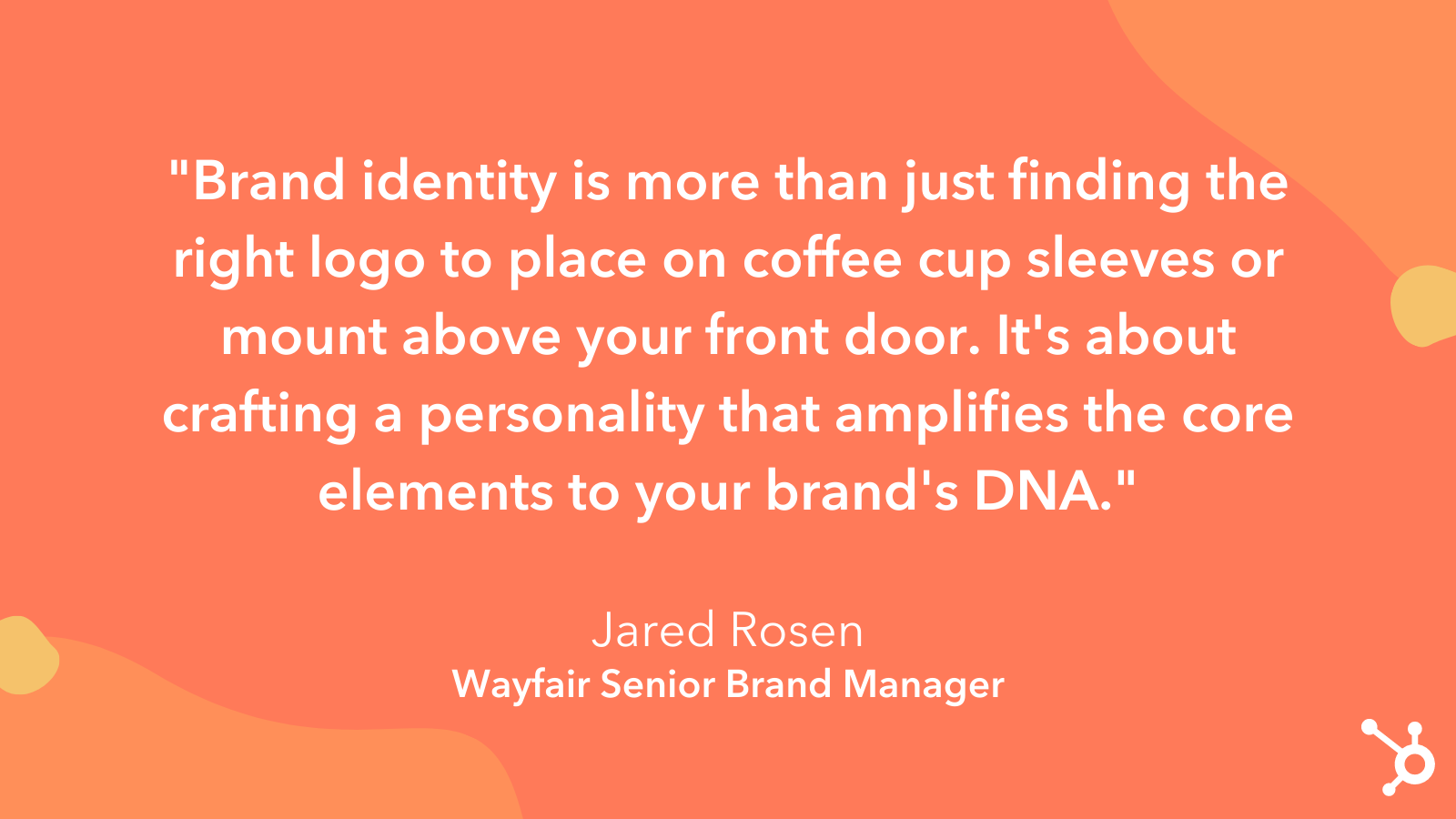 Ultimately, your production leaves an impression on your customers long later on you lot've fabricated the sale. Brand identity is the process of shaping that impression.
Ultimately, your production leaves an impression on your customers long later on you lot've fabricated the sale. Brand identity is the process of shaping that impression.Strong Make Identity Examples
1. Coca-Cola
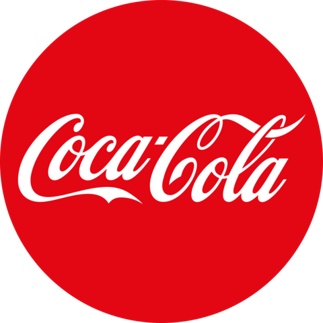
2. Hustle & Hope Greeting Cards

3. POP Fit

four. Burt's Bees

5. Asana

6. Semicolon Bookstore & Gallery

Why is make identity and then important?
The "Face up" of Your Concern
Credibility and Trust
Advertising Impressions
Your Company'southward Mission
Generating New Customers and Delighting Existing Ones
How to Create a Brand Identity
1. Research your audience, value proposition, and competition.
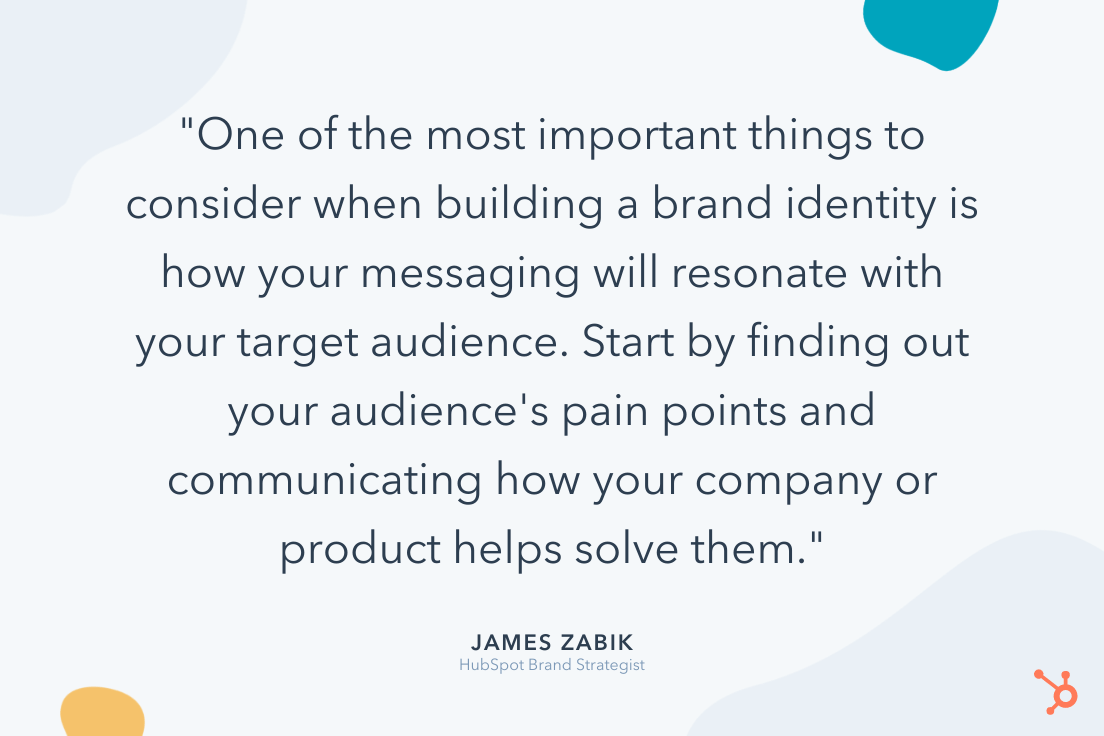 Zabik adds, "You might have a flashy logo and eye-catching marketing copy, but if it doesn't address your customers' hurting points clearly and effectively, it'll be challenging to build a strong and lasting brand identity."
Zabik adds, "You might have a flashy logo and eye-catching marketing copy, but if it doesn't address your customers' hurting points clearly and effectively, it'll be challenging to build a strong and lasting brand identity."Audience
Value Proposition & Competition
Mission

Personality
SWOT Assay
2. Blueprint the logo and a template for it.
Logo
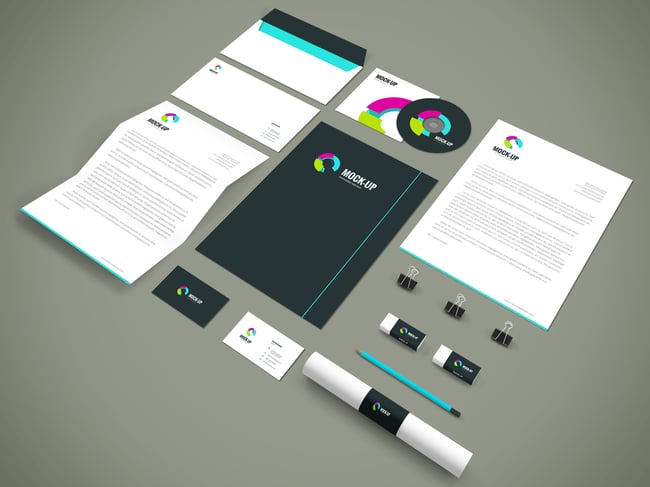
Interesting Course
Color & Type
Templates
Consistency
Flexibility
Certificate
three. Integrate language you can utilise to connect, advertise, and embody on social media.
Language
Connection & Emotion
Advertise
Social Media
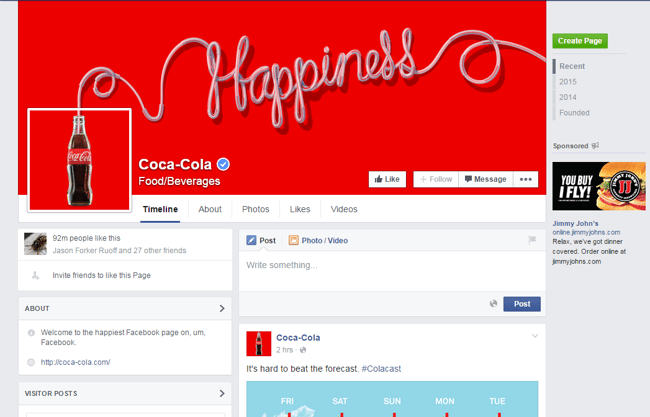
four. Know what to avoid.
Don't give your customers mixed messages.
Don't copy your competitors.
Don't lose consistency between online and offline.
Scale, don't sacrifice.
5. Monitor your brand to maintain its brand identity.


Originally published Dec 27, 2021 vii:00:00 AM, updated January 12 2022
0 Response to "Ad With Fashion Model and Logo"
Post a Comment